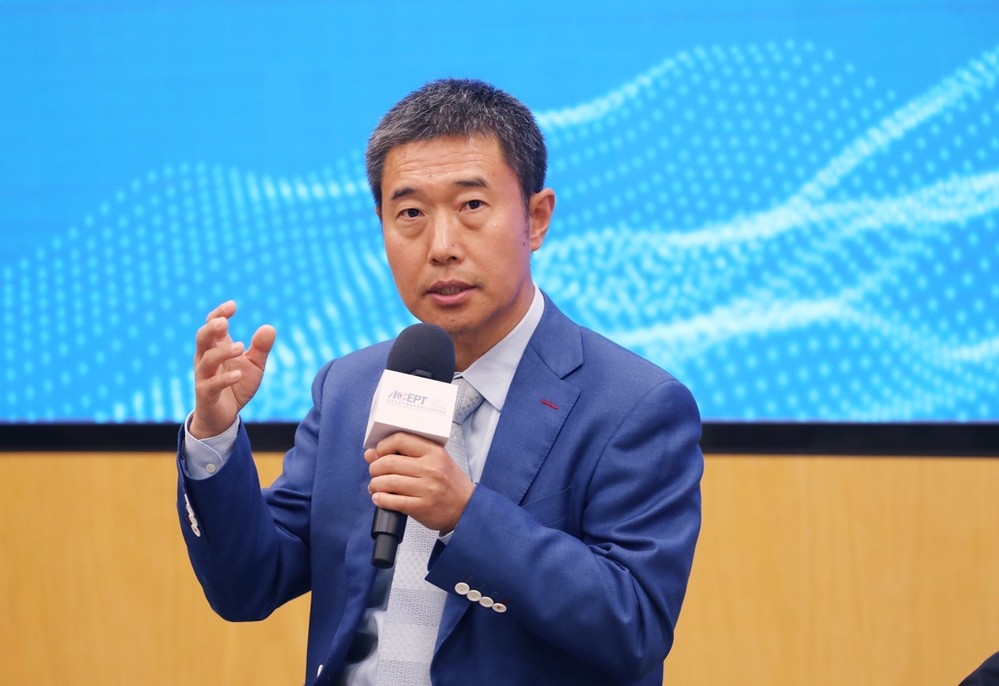
The following is a summary of Liu Peilin's comments made during a panel discussion at the Sixth Annual Conference of Government and Economics held at Tsinghua University, Beijing, on April 27, 2024. Dr. Liu is a Research Fellow at Tsinghua University's Academic Center for Chinese Economic Practice and Thinking and Chief Economist at Zhejiang University's Research Center for Regional Coordinated Development.
On April 27, 2024, the Sixth Annual Conference of Government and Economics, co-hosted by the Society for the Analysis of Government and Economics (SAGE) along with Tsinghua University's School of Social Sciences and the Academic Center for Chinese Economic Practice and Thinking (ACCEPT), was convened on campus at Tsinghua University. Liu Peilin, Research Fellow at ACCEPT and Chief Economist at Zhejiang University's Research Center for Regional Coordinated Development, joined SAGE Co-President and ACCEPT Director David Daokui Li alongside a panel of distinguished guests for a roundtable discussion after the conclusion of opening remarks and keynote speeches.
Liu Peilin explained that in order to stimulate China's economic activity several different approaches could be taken. First, a favorable external development environment must be fostered, including expanding the space for sourcing technological assets while promoting external demand. Second, reforms should be deepened and a predictable long-term business environment should be established to provide enterprises with a more predictable long-term trajectory that supports innovation and investment activities. Third, the broader society ought to be guided towards taking a more accurate view of the country's growth potential, including avoiding underestimating the prospects for its growth rate. Compared with traditional fiscal and monetary policies, the task of guiding people's expectations does not require expending one's treasure, while creating far fewer distortions to economic activities. The reports of the 19th and 20th National Congresses of the Communist Party of China both proposed that the country's national development plan should form the basis for steering its fiscal and monetary policies, which is not to say that this implies a return to a planned economy, but instead suggests that the country's medium- to long-term development plan should provide an overall direction to guide macroeconomic policies, including in terms of the country's potential growth rate and ongoing upgrades to its economic structure, among other dimensions.
In order to accurately identify the potential growth rate of China's economy and avoid underestimating the prospects for the country's growth rate at this current stage in its development, Liu offered up his own assessment of the situation on at least two different issues. First, as compared with the United States, Japan, and South Korea, there is still room for Chinese's per capita GDP to continue expanding at a medium-to-high rate. Second, the country's future growth potential should not be underestimated in view of the fact that its so-called "demographic dividend" has begun to erode. Since China's "reform and opening up" began, the main driving force behind the country's rapid pace of growth has in fact been constant improvements to its productivity and not its "demographic dividend."
In view of the notable contradiction currently presented by the country's shortfall in effective demand, Liu argued that infrastructure construction, which in the past had become a highly effective and efficient sector, is now hardly able to play the pivotal role it once did, which mainly reflects an ongoing decline in demand, and with the issue of increasing government debt having meanwhile made it more difficult to finance new projects. At present, the large-scale equipment replacement and renewal program being pursued by the government satisfies the basic requirements for high-quality economic development. Transferring domestic equipment or relocating production lines to other developing countries with the support of export credits has further created the domestic room necessary to undertake equipment upgrades. Such projects have provided a more favorable flow of funding and a greater guarantee of repayment, which not only serves to effectively advance the industrialization of other countries, but also avoids any allegations that China is setting up "debt traps" overseas.